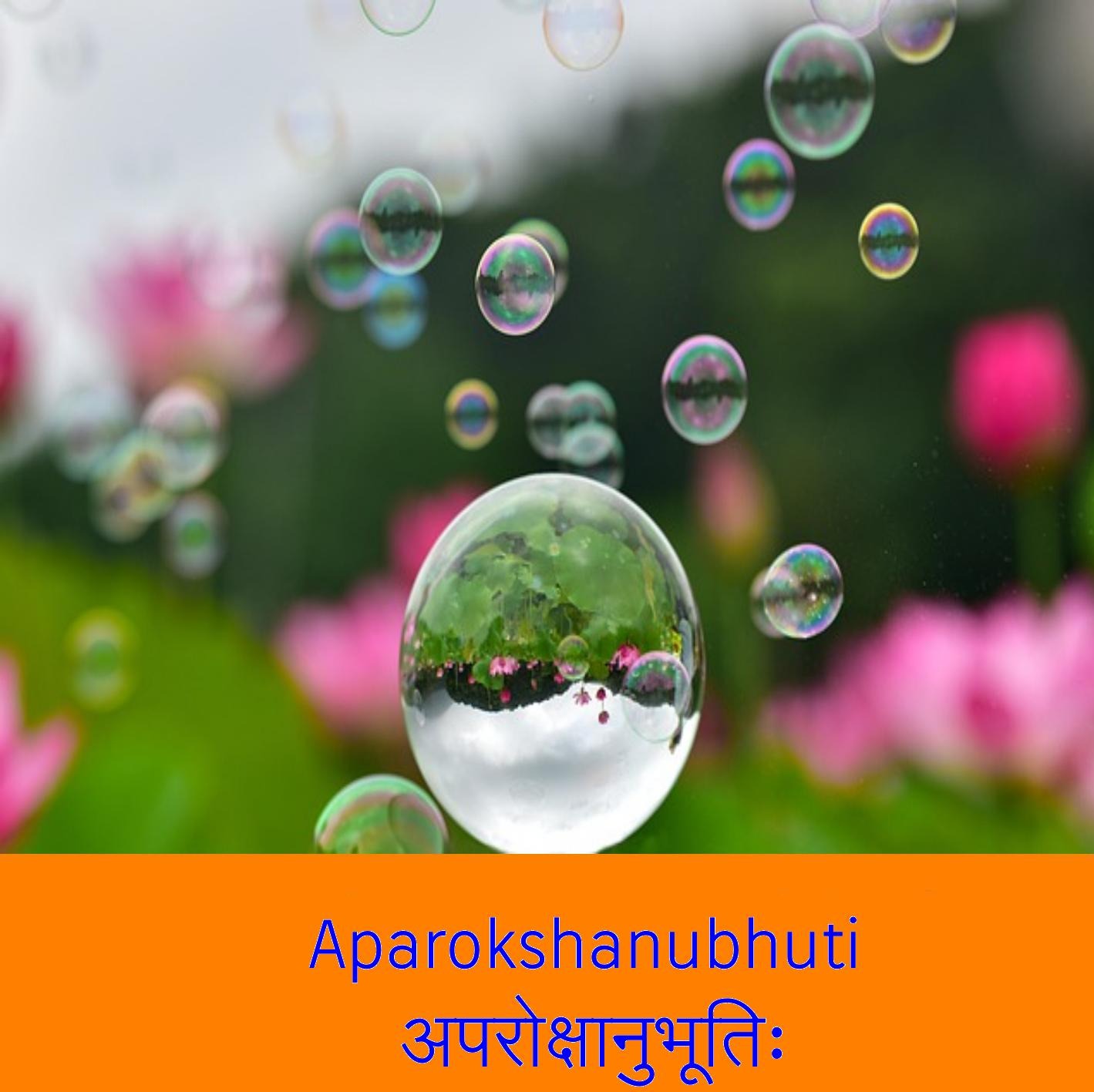Aparokshanubhuti-20
- Author
- Aurobind Padiyath
- Published
- Wed 13 Aug 2025
- Episode Link
- https://redcircle.com/shows/fe53db7f-360c-4b30-b69c-83084d6bcae3/episodes/e05afe17-e094-4402-8843-a105fdea8544
Verse No 46
- Illusoriness of Distinctions:
- The apparent differences between subject and object, pervader and pervaded, are not ultimately real — they are superimpositions upon Brahman, like the apparent separation between the space inside and outside a pot.
- World as Brahman:
- Since these distinctions are imagined, the entire world (prapañca) is nothing but Brahman — non-dual and indivisible.
- Role of Scripture (Śruti):
- The ultimate authority of Vedānta lies in śruti — which commands (like Īśvara) and reveals the non-dual identity of all things with Ātman/Brahman.
- Cognitive Liberation:
- Once this truth is known, there is nothing else left to be known — as everything is known through knowing the Self (Atman = Brahman).
- Advaita's Epistemic Revolution:
- Instead of relying on empirical distinctions, Advaita teaches a radical shift: The many are not real. The One alone is real.
Verse No 47
- Perception is not Final Authority:
- While direct perception appears compelling, it is not absolute. It is corrected by śruti, the revealed truth.
- Śruti Declares Non-Duality:
- The foundational Upaniṣadic teaching is ekam eva advitīyam — Brahman is one without a second. Hence, plurality is falsified.
- No Real Second Entity:
- Brahman is both cause and effect, yet the effect (world) is not truly distinct from its cause — just as a pot is not truly distinct from clay.
- Superimposition (Adhyāsa) Explains Illusion:
- All distinctions (inside-outside, subject-object) are pratibhāsika — they appear due to ignorance, not because they are real.
- Only Brahman is Real (Satya), World is Mithyā:
- Since the world cannot exist apart from Brahman, it is not absolutely real. It is mithyā — dependent, ephemeral, and ultimately unreal in itself.
Verse No 48
- Bhēda-dṛṣṭi (Seeing Difference) Is a Fundamental Error:
- The perception of multiplicity is not harmless; it is the root of bondage — perpetuating saṁsāra.
- Śruti Declares Duality as Dangerous:
- The Upaniṣads repeatedly warn that one who sees plurality "goes from death to death" — i.e., continues in ignorance and rebirth.
- The World (Kārya) Is Non-Different from Brahman (Kāraṇa):
- The so-called "world" is just a vivarta (apparent transformation) of Brahman. It is not a separate reality.
- Mithyā and Adhyāsa Are the Key Concepts:
- All perceived duality is mithyā — neither absolutely real nor absolutely unreal — but dependent on Brahman, and falsely superimposed upon it.
- Liberation Comes from Knowing Non-Duality:
- Only when one sees no second thing — no bhēda — does one attain mokṣa. Non-duality alone is freedom.
Verse No 49
- Brahman as the Sole Cause (Abhinna Upādāna Kāraṇa)
- Brahman is not merely the efficient cause, but also the material cause — the universe is non-different from Brahman, just as a pot is non-different from clay.
- Creation, Sustenance, and Dissolution are Apparent (Vivarta)
- These are appearances in Brahman, not real transformations. Brahman remains unchanged, while the names and forms (nāma-rūpa) appear and disappear.
- Satyam: Brahman; Mithyā: Universe
- Though the world appears, it is not ultimately real. What truly is, is pure Being — sat-mātra, which is Brahman.
- Right Knowledge (Jnana) is Liberation (Mokṣa)
- The prescribed action here is not karma, but viveka and niścaya — discriminative understanding and firm realization that “All this is Brahman”.
